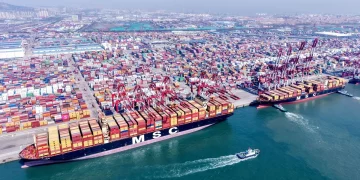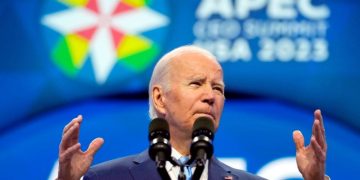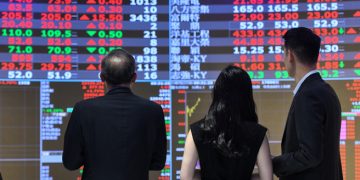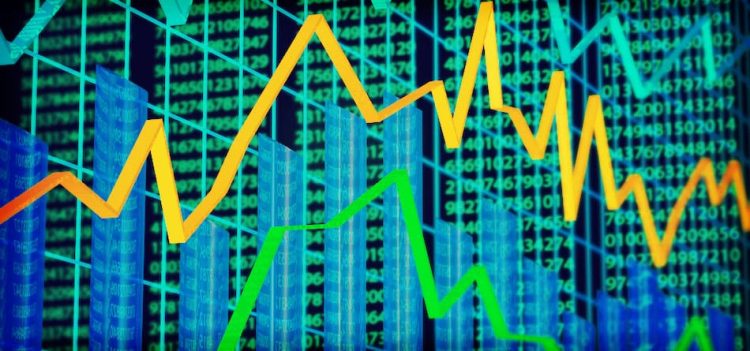Global trade tensions have become an increasingly significant factor affecting financial markets over the past decade. Trade disputes, tariffs, sanctions, and other geopolitical factors related to global trade have a profound impact on the futures market, which serves as a primary avenue for price discovery and hedging. In this article, we will explore how global trade tensions impact the futures market, analyze the influence of trade policies from major global economies such as the U.S., China, and Europe, and discuss how investors can identify potential opportunities in the midst of trade conflicts.
How Global Trade Tensions Affect the Futures Market
Global trade tensions can manifest in many ways, from tariff increases to trade wars, and each of these factors can have profound effects on futures markets across various asset classes. Futures markets offer insight into how market participants anticipate the future economic landscape and price movements of underlying assets, making them a powerful tool for understanding the market’s reaction to trade tensions.
- Price Volatility in Commodities
Trade tensions often lead to significant volatility in commodity markets, as tariffs, sanctions, and other trade barriers affect the global supply chain. For instance, if a country imposes tariffs on a particular commodity, such as steel or aluminum, the futures price of that commodity can rise due to the anticipated decrease in supply. Conversely, if trade tensions lead to reduced demand for a commodity, futures prices may fall. Agricultural products, energy commodities like oil, and precious metals are particularly sensitive to global trade tensions. For example, the U.S.-China trade war saw fluctuations in soybean futures prices, as China, a major buyer of U.S. soybeans, imposed tariffs on American exports. This caused a drop in demand for U.S. soybeans and led to a significant decline in futures prices. Similarly, oil futures were affected by geopolitical tensions and trade policies, especially when sanctions were imposed on oil-producing countries, affecting global supply. - Impact on Currency Futures
Trade tensions also have a direct impact on currency futures, as changes in trade policies affect the relative strength of currencies. For instance, when the U.S. imposes tariffs on a trading partner, the partner’s currency may weaken due to the expected decline in exports and overall economic growth. A weaker currency can make exports cheaper, potentially offsetting the effects of the tariffs, but it can also signal broader economic instability. Currency futures are often used by traders to speculate on the movement of major currencies, especially those of the U.S., Eurozone, and China. The global trade war between the U.S. and China, for example, caused significant fluctuations in the value of the Chinese yuan and the U.S. dollar. Investors in currency futures closely monitor trade policies to predict which currencies will strengthen or weaken based on the ongoing geopolitical landscape. - Stock Market Futures and Trade Policies
Global trade tensions have a profound impact on stock market futures, as trade policies influence corporate earnings, trade volumes, and market sentiment. Trade disputes often result in concerns about reduced global economic growth, leading to a drop in stock futures as investors anticipate slower economic activity. The U.S.-China trade war, for example, led to significant fluctuations in stock futures, particularly for companies that rely heavily on global trade, such as those in the technology, manufacturing, and agricultural sectors. The uncertainty caused by trade tensions often leads to volatility in stock indices, with investors adjusting their positions based on the evolving trade landscape. - Volatility in Metal Futures
Metals like gold, silver, and industrial metals (e.g., copper, aluminum) are highly sensitive to trade tensions. Trade conflicts can disrupt global supply chains, leading to price fluctuations in metal futures markets. Precious metals like gold often see increased demand during periods of uncertainty, as investors seek safe-haven assets to protect against geopolitical risk. Conversely, industrial metals like copper are influenced by expectations of global growth. A trade war that dampens economic growth expectations can lead to a drop in copper futures prices. For example, the U.S.-China trade war had a significant impact on copper futures, as China is one of the largest consumers of copper for manufacturing and infrastructure development. A slowdown in Chinese demand for copper due to trade tensions resulted in downward pressure on prices.

Analyzing How U.S., China, and European Trade Policies Influence Futures Market Volatility
The trade policies of major global economic players such as the U.S., China, and Europe have a disproportionate impact on global trade and, consequently, on futures markets. These three economic giants set the tone for global trade dynamics and their policies are keenly monitored by market participants.
- U.S. Trade Policies and Their Effect on Futures Markets
The U.S. has been a central player in recent trade tensions, with its trade policies affecting a wide range of global markets. U.S. tariffs and sanctions have had a direct impact on futures markets, particularly in commodities and currencies. The implementation of tariffs on Chinese goods, for example, led to a drop in the futures prices of agricultural commodities like soybeans, as well as industrial metals, as China is a major importer of U.S. goods. The U.S. also plays a central role in currency futures, with the U.S. dollar often being the reserve currency of choice in global trade. As such, any change in U.S. trade policy, such as the imposition of tariffs or trade agreements, can lead to fluctuations in the dollar’s value, affecting currency futures. Furthermore, U.S. policies on interest rates, inflation, and fiscal spending influence broader market conditions, which have a direct bearing on stock, commodity, and bond futures. - China’s Trade Policies and Their Influence on Futures Markets
As the world’s second-largest economy, China’s trade policies are crucial in shaping global market dynamics. China’s policies, particularly concerning tariffs, intellectual property rights, and market access, have far-reaching implications for futures markets, especially in commodities, technology, and manufacturing. China’s demand for raw materials such as oil, copper, and iron ore directly impacts commodity futures markets. When China imposes tariffs or trade restrictions on certain countries, it can result in disruptions to global supply chains, driving up the prices of affected commodities. Additionally, China’s currency policies—such as adjustments to the yuan’s value—can impact futures in global currencies, with a weaker yuan potentially making Chinese exports more competitive while affecting trade balances. - European Trade Policies and Their Impact on Futures Markets
Europe’s trade policies, particularly those of the European Union (EU), also play a critical role in shaping global trade and futures market behavior. The EU’s position on trade agreements, tariffs, and regulations has a substantial effect on the global economy. The EU is one of the largest trading blocs, and its trade policies impact everything from agricultural products to manufacturing and energy. In the context of futures markets, European policies on agricultural products and energy have a significant impact. For instance, changes in EU trade policies regarding agricultural tariffs or subsidies can influence the futures prices of grains, dairy, and other commodities. Similarly, Europe’s stance on renewable energy, carbon taxes, and environmental regulations can affect energy markets, particularly in futures for natural gas, oil, and renewables. The Brexit negotiations also highlighted the volatility that trade policy changes can create, as the uncertainty surrounding the U.K.’s exit from the EU led to fluctuations in currency futures (particularly the British pound) and stock indices across Europe.
How Investors Can Identify Futures Market Opportunities in the Midst of Global Trade Conflicts
Despite the heightened volatility and uncertainty that accompany global trade tensions, investors can identify opportunities in the futures markets by carefully analyzing the ongoing geopolitical and economic developments. Below are several strategies investors can use to navigate the futures market during times of trade conflict.
- Monitor Trade Policy Announcements
Investors should stay informed about the latest developments in global trade policies, including tariff announcements, trade negotiations, and sanctions. These announcements can provide valuable insights into future market trends and potential opportunities. For example, an announcement of new tariffs can immediately affect commodity prices, while trade agreements can signal increased demand for certain goods and services, providing an opportunity to take long positions in the related futures contracts. - Look for Safe-Haven Assets
During periods of heightened uncertainty and trade conflict, safe-haven assets such as gold and U.S. Treasury bonds often experience increased demand. Investors can take advantage of these market movements by investing in futures contracts for these assets. Gold futures, for example, tend to rise when trade tensions create global economic uncertainty, making it a popular choice for investors seeking protection from market volatility. - Diversify Across Sectors
Trade conflicts often create sector-specific opportunities in the futures market. For example, agricultural commodities may be particularly affected by tariffs and trade disputes, while energy futures may be influenced by changes in trade relations with oil-producing countries. By diversifying across different sectors, investors can reduce their exposure to risks related to specific trade conflicts while potentially benefiting from price movements in various markets. - Leverage Currency Futures for Geopolitical Insights
Currency futures can provide significant opportunities in the midst of global trade tensions. When trade policies affect currency valuations, there can be substantial profit potential for traders who understand the dynamics of the foreign exchange market. Monitoring trade disputes, tariffs, and sanctions can help investors anticipate which currencies are likely to strengthen or weaken, enabling them to take positions in currency futures accordingly. - Utilize Technical Analysis in Volatile Markets
In highly volatile periods caused by trade tensions, technical analysis becomes a crucial tool for identifying entry and exit points in futures markets. By analyzing price charts, trends, and key technical indicators, investors can make more informed decisions about when to enter or exit futures contracts in various asset classes.
Conclusion
Global trade tensions have a significant impact on futures markets, affecting everything from commodity prices to currency and stock futures. The trade policies of major economies such as the U.S., China, and Europe drive market volatility, making it crucial for investors to stay informed and adapt their strategies. While global trade conflicts introduce uncertainty, they also present opportunities for investors who are able to navigate the volatility and identify trends. By closely monitoring trade policy developments, diversifying across asset classes, and using technical analysis, investors can position themselves to profit from the fluctuations that result from global trade tensions.































